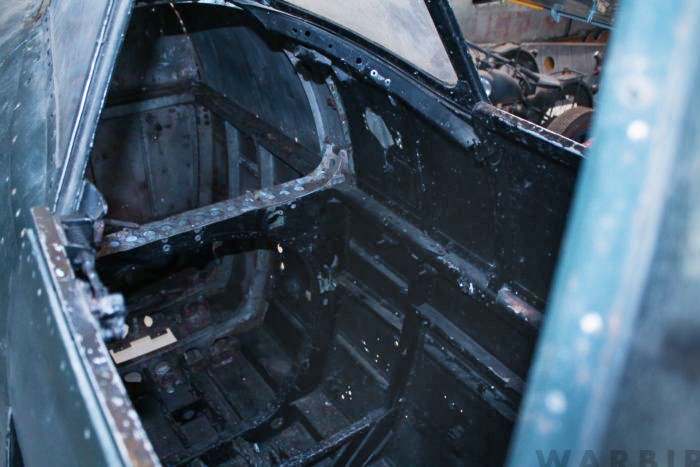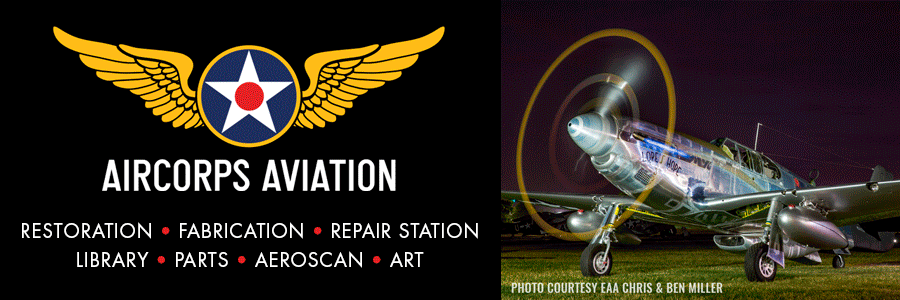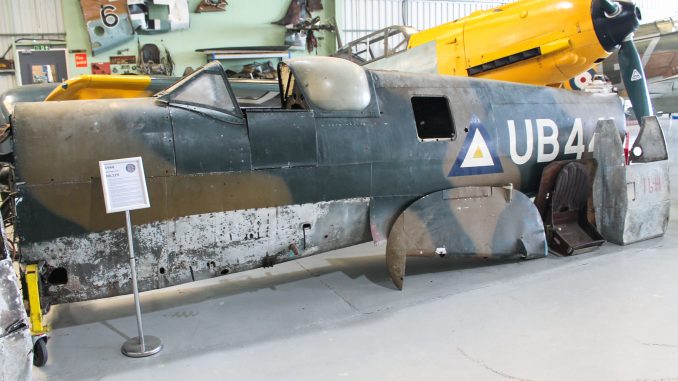
Ex-Burmese Air Force Supermarine Spitfire Mk.IX ML119 recently arrived at the Biggin Hill Heritage Hangar for a full restoration to flying condition. (image via BHHH)
You might also like
Back in 2012, the warbird world was upended by the dizzying possibility that up to 140 intact Supermarine Spitfires would emerge “in their shipping crates” from their supposed WWII-era burial ground near the former RAF airfield in Mingaladon, Burma. Of course, the desired outcome never materialized – the fever-dream expiring into embarrassment once the recovery team, after months of effort and expense, had nothing more to show for their endeavor than the Burmese earth on their faces.
Oddly enough, had the parties involved ventured to Burma a decade earlier, they would indeed have found a significant cache of Supermarine’s finest – albeit not by the dozen, nor indeed in their shipping containers, but a half squadron’s worth of largely complete former Burmese Air Force Spitfire Mk.IXs (and far rarer Seafire Mk.XVs) were indeed on hand. Likely for a good deal less financial outlay than that wasted on the Mingaladon dig in 2012/2013, an American named David Gouldsmith acquired four of the seven extant airframes with his partners and shipped them to his base in Cassville, Missouri during May, 1999. While the Burmese military retained Seafire F.Mk.XVs PR422 and PR376 along with Spitfire LF Mk.IXe TE513, Gouldsmith was able to acquire Seafire F. Mk.XV SR462 and the following Spitfires – LF Mk.IXe ML119, F Mk.IX PV270 and F Mk.IX SL633.
These remarkable time-capsules arrived in the USA more than 20 years ago, but it took some time before any restoration began. Brendon Deere’s Spitfire Mk.IX, PV270, was the first of them to return to the skies, making its initial post-restoration flight at Ohakea in New Zealand on March 18th, 2009. (Interestingly, Brendon is a nephew of the legendary Kiwi fighter ace, Al Deere, who both played a significant role in the Battle of Britain and later commanded the RAF fighter wing at Biggin Hill.)
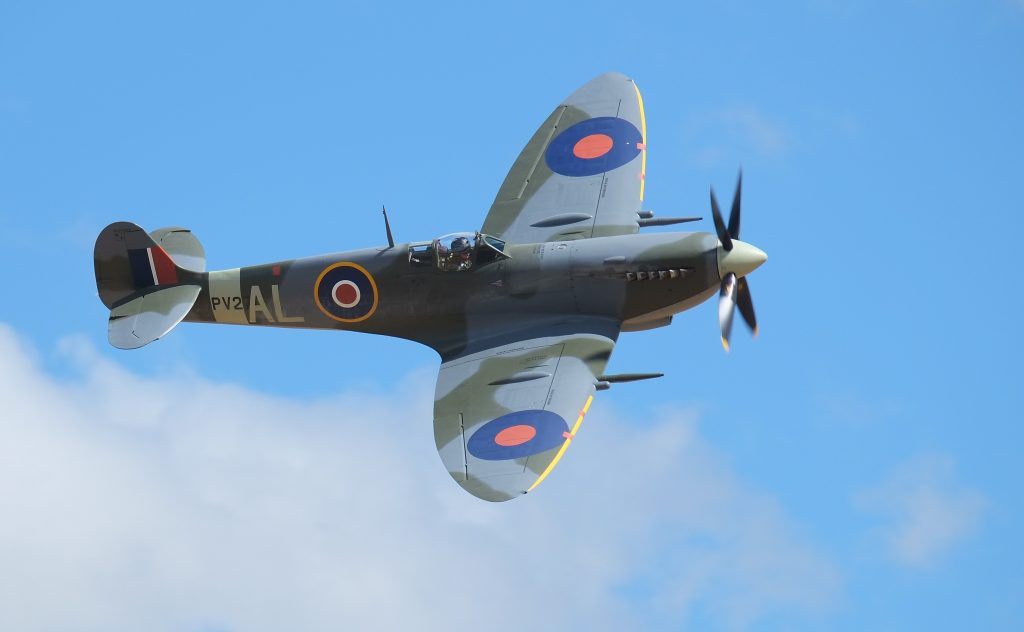
The first of the ex-Burmese Spitfires to fly again was Brendon Deere’s Mk.IX PV270, which took to the skies following restoration in New Zealand during 2009. (image via Wikimedia)
Next up was John Sessions’ Mk.IX SL633, which became airborne again at Paine Field in Everett, Washington on October 15th, 2010, following an extensive restoration with Historic Flying Ltd. in Duxford, England. Meanwhile Seafire F.Mk.XV SR462 is well on the way to flying again in England, its restoration currently proceeding in Old Warden, Bedfordshire, home to the magnificent Shuttleworth Collection. The only one of the four Burmese escapee fighter planes which presently remains in its as-recovered state is Spitfire LF Mk.IXe ML119 – but this is now set to change following the airframe’s recent arrival at the Biggin Hill Heritage Hangar.
More than a dozen Spitfires have re-emerged in flying trim from the Biggin Hill Heritage Hangar in the past decade; the technicians within have remarkable abilities for breathing new life into tired airframes. The organization is thrilled by their latest acquisition, as they described recently on their facebook page (see the adapted and expanded text below)…
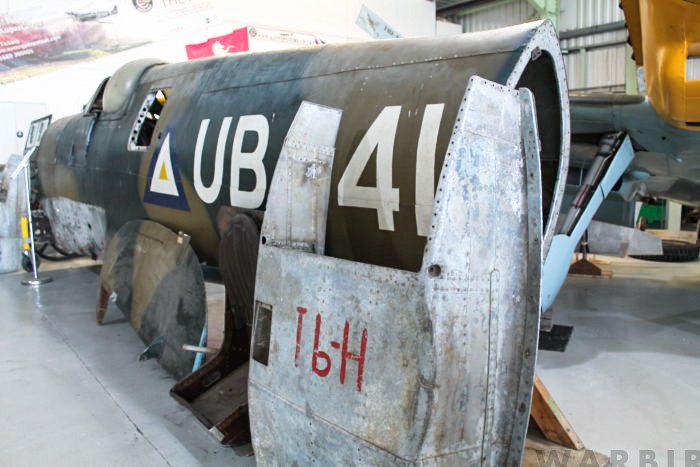
ML119’s fuselage, still in its Burmese Air Force markings, sits in the Biggin Hill Heritage Hangar after the aircraft’s recent arrival for a full restoration back to flying condition. Note the underwing radiator fairing in the foreground. (image via BHHH)
We’re delighted to announce that Spitfire LF MkIX ML119 (G-SDNI) is now located at the Biggin Hill Heritage Hangar (BHHH) and awaiting restoration to flying condition. This aircraft has a fascinating history, having flown with British, Czech, Israeli and Burmese air forces; this provides us with some interesting livery options to consider. We’re planning to start the project in 2022 once we have completed some of our existing Spitfire restorations.
ABOUT ML119
Rolled out from Vickers Armstrong at Castle Bromwich, ML119 came from a batch of 2,190 Spitfires built under contract B98167/39. Delivered to No. 9 Maintenance Unit (MU) at RAF Cosford on March 24th, 1944, RAF No. 1 Squadron, based at RAF Martlesham Heath, formally took the Spitfire on charge on April 4th. A move to RAF North Weald followed by a move to RAF Ayr lead to ML119 becoming the personal mount of Squadron Leader Henry Lardner-Burke, DFC. Subsequent transfers to RAF Predannack and then RAF Harrowbeer saw the squadron move south, joining other units in combating the V-1 cruise missile menace. Still with No.1 Squadron ,the Spitfire began a long association with air stations in County Kent, being based first at RAF Detling near Maidstone where Diver operations (against V-1s) were carried out. A similar role saw a move to RAF Lympne near Hythe before they returned to RAF Detling, continuing Diver operations until December 1944.
With the conclusion of the V-1 campaign, No.1 squadron moved to RAF Manston to carry out escort sorties. Squadron Leader David Cox became No.1’s new commanding officer in January, 1945, and he took also took on ML119 as his personal Spitfire, flying the fighter until the end of WWII. Cox and Lardner-Burke accumulated more than a hundred combat sorties in the aircraft between them. With the conclusion of hostilities in Europe, the RAF began downsizing its domestic fleet, dispersing some of the older airframes to air arms reconstituting in newly-freed Europe. As part of this effort, the British Government transferred several dozen, including ML119, to the newly-reformed Czechoslovakian Air Force. The fighter didn’t remain with the Czechs for long however, as they grounded their Spitfire fleet with the arrival of newer Soviet types in late 1948. The Czechs sold 61 of their surviving Spitfires to the nascent Israeli Air Force beginning in 1948. ML119 arrived on the docks at Haifa in December, 1948. After a period of overhaul, the fighter joined No.101 squadron at Hatzor Air Base during May 1949. While at Ramat David Air Base, No.101 came under command of the future Israeli President, R.T. Ezer-Weizman. ML119 moved between several other Israeli units in subsequent years before undergoing overhaul for sale to the Union of Burma Air Force in the summer of 1954. Interestingly, a number of these former Israeli Air Force Spitfires made the journey to Burma under their own power, with the famous British A.T.A. ferry pilot, Delores ‘Jackie’ Moggridge, performing the honors in ML119. The arduous journey of several thousand miles across hostile terrain took many days and many stops for the notoriously short-ranged Spitfire. Moggridge arrived at Mingaladon, Burma,her final destination in ML119, on February 22, 1955. Soon after, ML119 joined the UBAF’s own No.1 Squadron – again becoming the commanding officer’s personal aircraft! Her flying career in Burma was brief, however, as a forced landing in Bamtang during June, 1955 saw the airframe struck off and relegated to gate guard duties for the next several decades, spending a significant period in this role at Mingaladon Air Base – ironically the site where all those fictional Spitfires supposedly lay buried in 2012! In the mid-90s, the Burmese military rounded up most of their historic airframes at Mingaladon to decide which airframes should be retained for their proposed museum, with the excess examples being sold on overseas in 1998/99.
ML119 returned to the UK in 2000 and entered storage within a barn in West Sussex until just recently, when she moved to the Heritage Hangar and into the capable hands at The Spitfire Company (Biggin Hill) Ltd for a restoration to flight. Having served from three of Kent’s major RAF airfields, ML119 can truly be said to be ‘The First Kent Spitfire’.
We look forwards to following this restoration as it proceeds, and to covering other activities at the Biggin Hill Heritage Hangar… watch this space!

